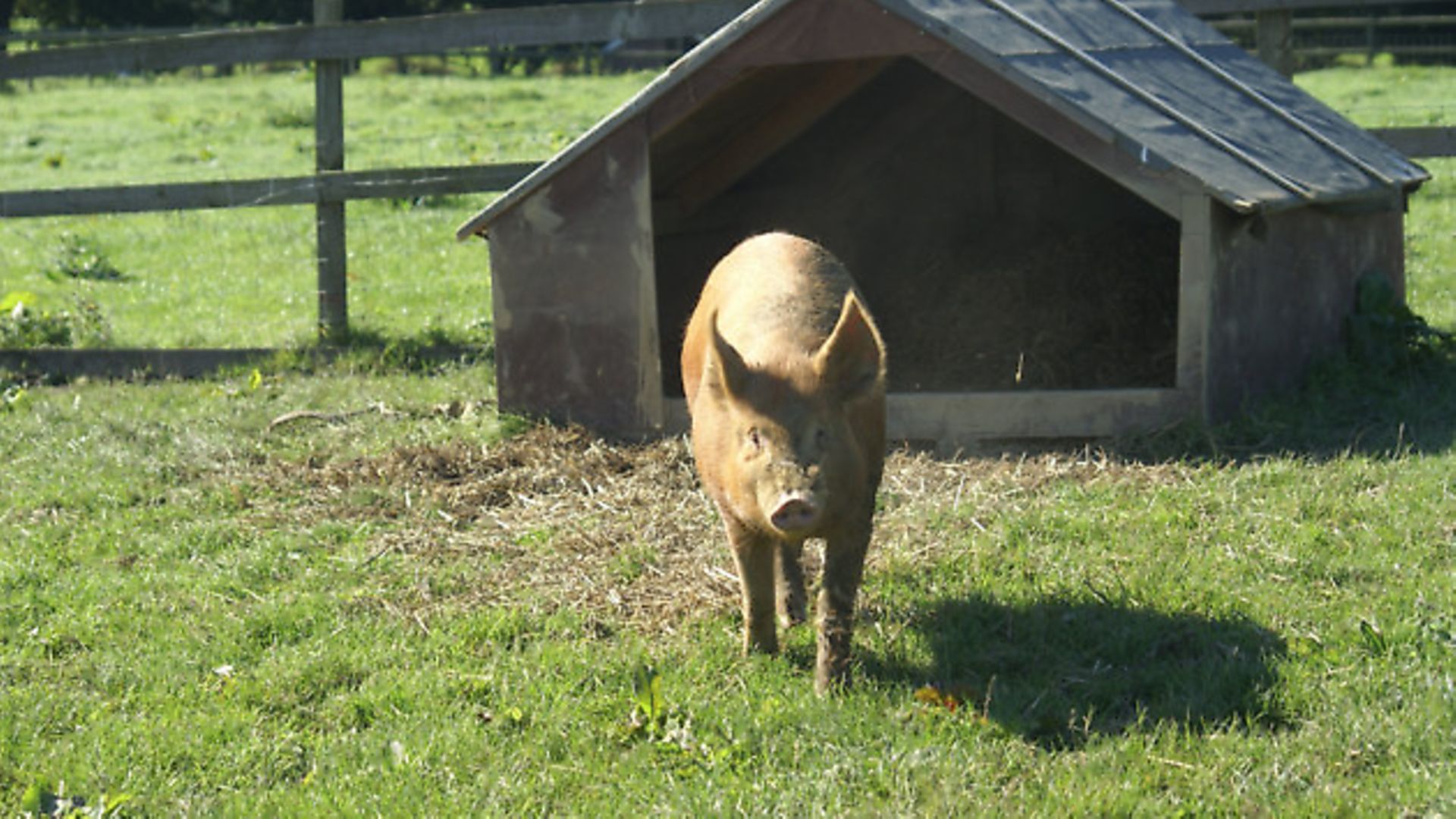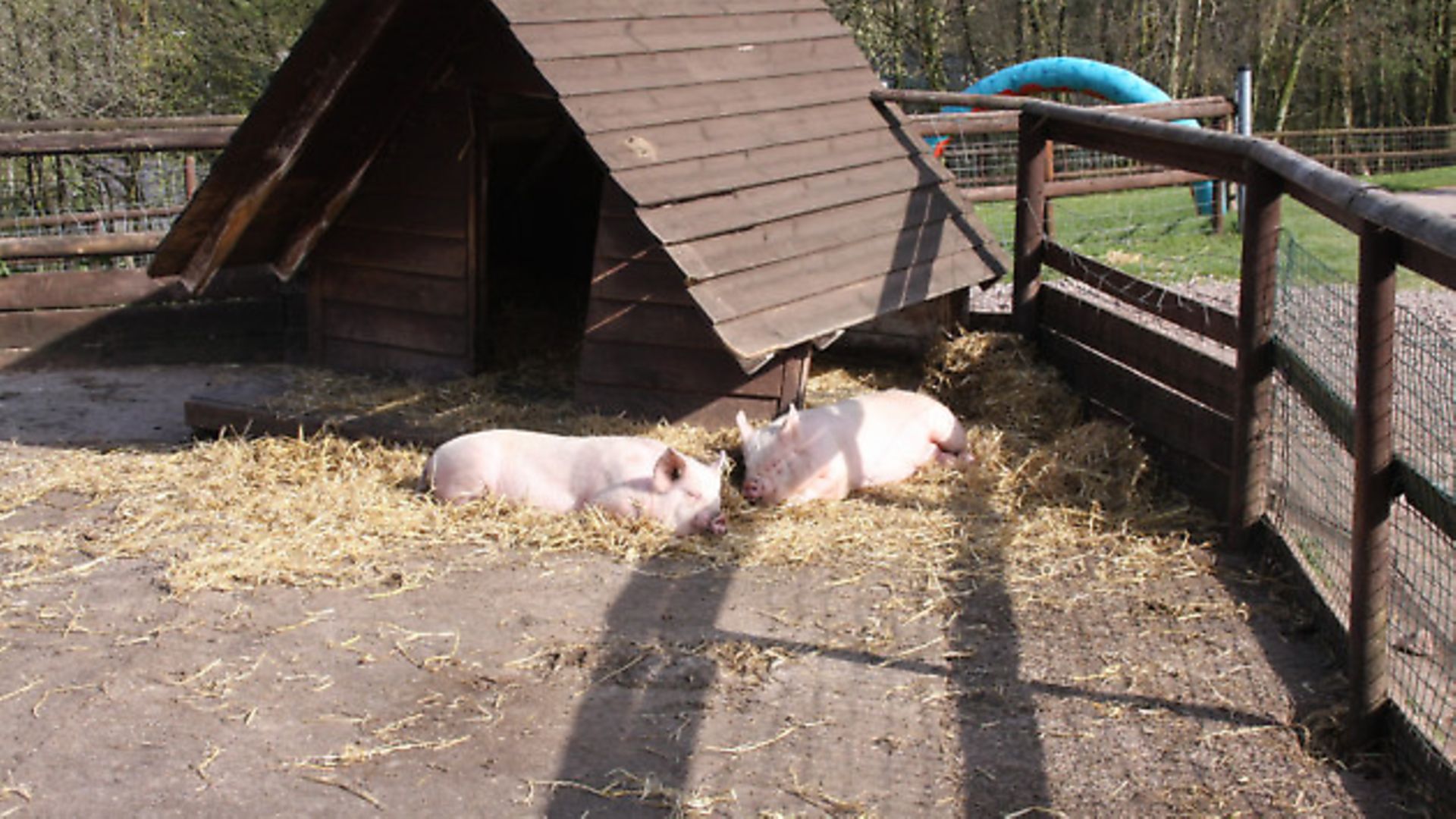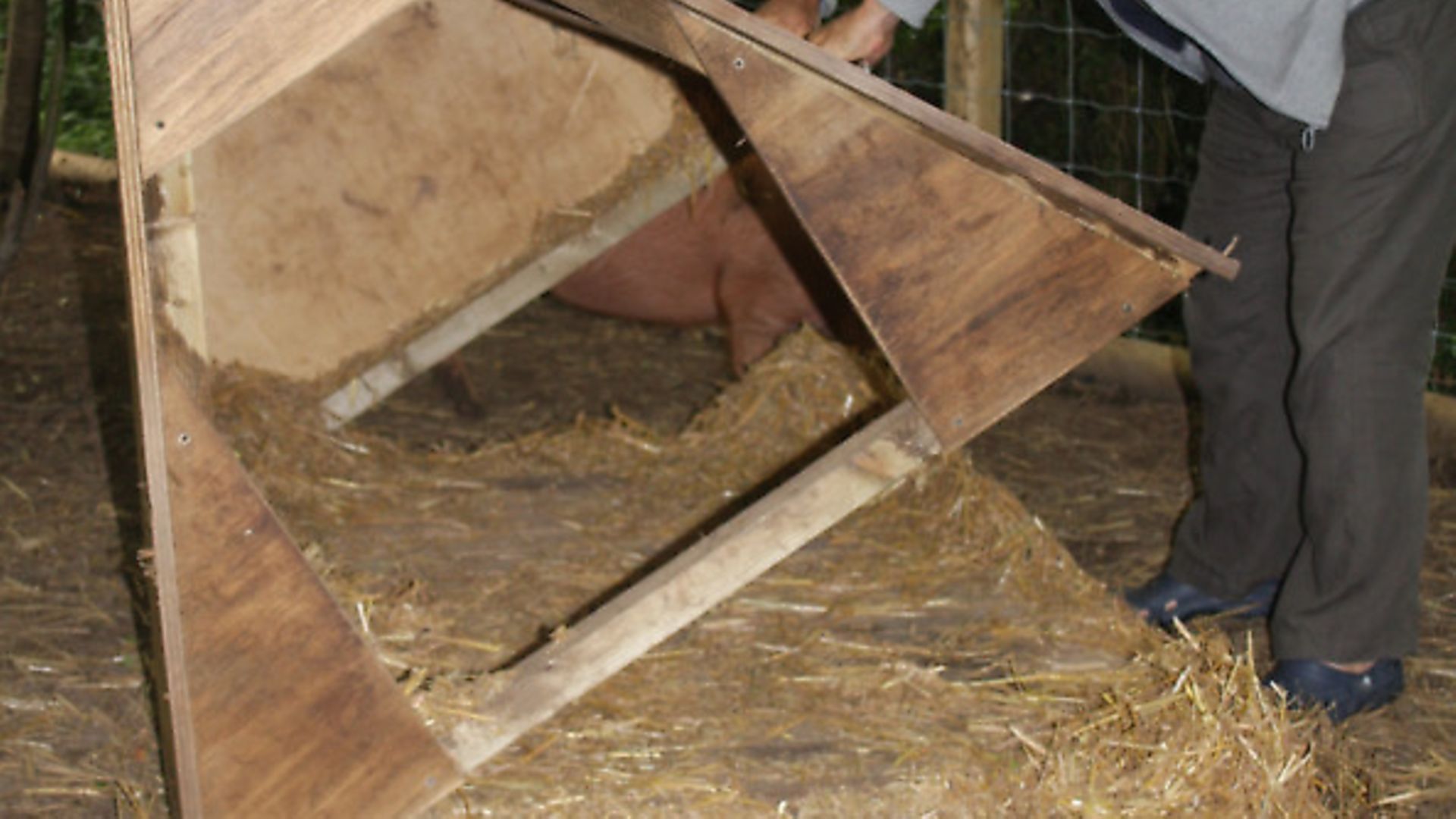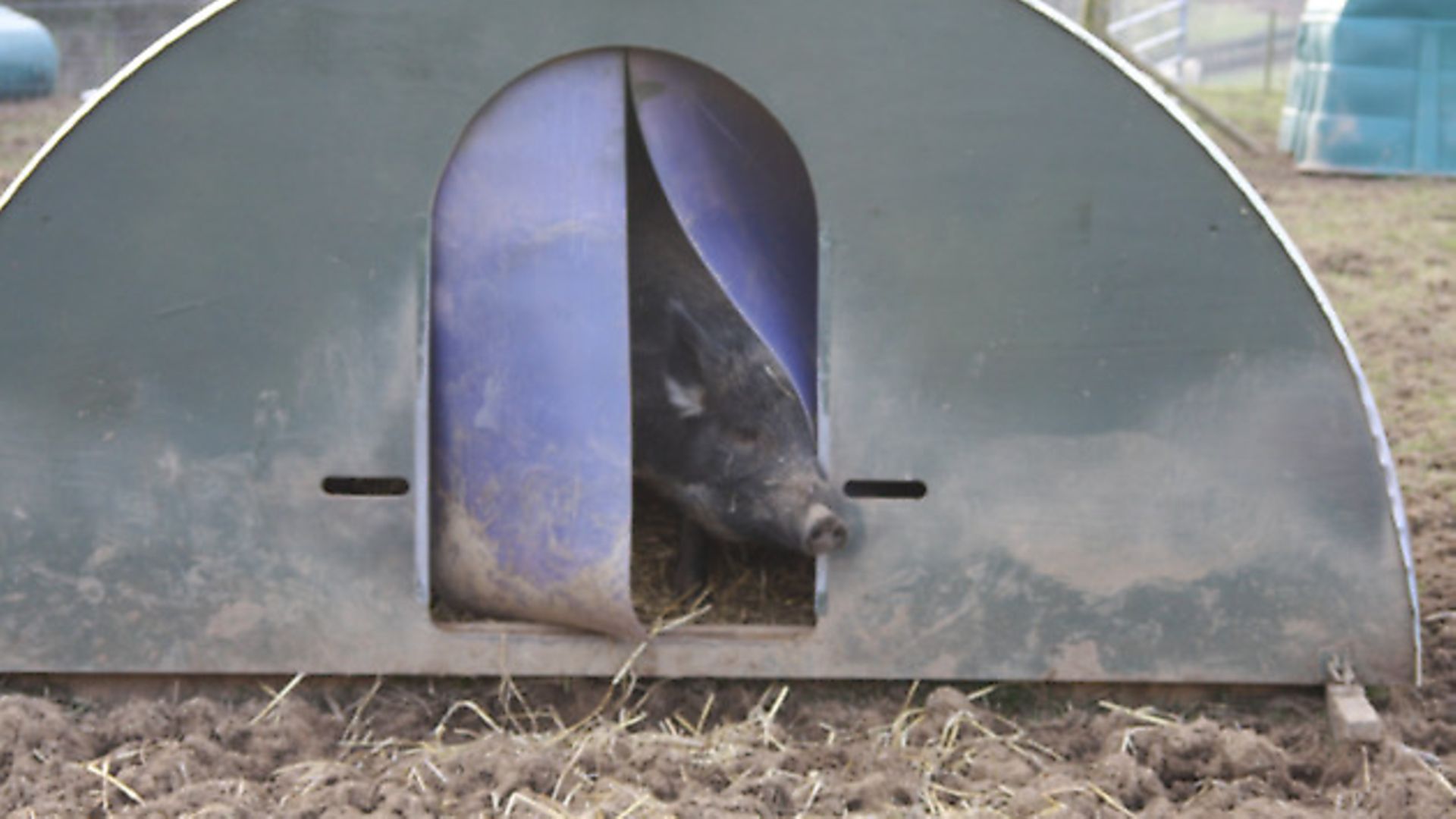Liz Shankland has advice on how to avoid mistakes with pig housing

All of our tough, traditional native breed pigs will live quite happily outdoors all year round – provided they have comfortable accommodation. When you’re starting with pigs, the biggest capital cost is going to be secure fencing – followed closely by housing. A traditional ark – the kind with a curved metal roof and an opening at one end – is likely to cost anything from £500 upwards. That’s for a basic ark, which doesn’t include optionalal extras like a floor, insulated walls, or lifting bars or hooks which allow you to attach straps and move it using a tractor.
It can be tempting to opt for what looks like a cheaper model, such as a flat-pack kit sold online, but the budget arks are invariably made of cheaper materials. In the long term, no matter how good your DIY skills, the ark won’t withstand the rough treatment it will encounter if it’s made from inferior products.
It’s important to choose wisely, otherwise you’ll be throwing your money away. The same goes for building your own accommodation. It’s not difficult to build a house (my Haynes Pig Manual shows you how to make a dome-shaped one in just a day), but if you try and cut corners, using flimsier raw materials, you won’t be doing yourself – or your pigs – any favours.

Types of housing to consider
There are a variety of options when it comes to choosing accommodation for your pigs:
Stable or barn – either as full-time accommodation for indoor-reared pigs or as sleeping quarters for outdoor-reared pigs. The downside to devoting an entire outbuilding to pigs is that, unless you can securely partition it off, you lose storage space for other things, such as feed, straw, machinery.
Dome-shaped ark with a galvanised roof and wooden ends. Probably the most popular choice for pigs reared outdoors, and not difficult to make yourself. Well-made ones can last 10 to 15 years, but expect to do some running repairs, such as replacing the wood.

Plastic ark – There are many for sale which are the same kind of design as a traditional ark, but which are made from one piece of moulded plastic. Another variation is often a normal galvanised roof, but plastic ends. Plastic arks are lighter to move than wooden and metal ones, and are easier to clean and disinfect. However, if they are easier for you to move, they will be easier still for the pigs to move, so consider adding floors or securing in some other way. On the plus side, plastic arks invariably withstand weather better and should last longer – provided your pigs don’t chew them!
Recycled fabric arks – There are lots of companies making arks and other livestock products (e.g. field shelters; panels for lining barns and stables) out of recycled farm waste compressed into durable sheets. They are tough and weather-proof – but not entirely bite-proof – longer-lasting than wood, and easier to clean, but they are expensive. One option to cut costs is to source the panels and build your own.
Traditional pig sty – low-level stone or brick structure with a small outdoor exercise area. Smallholders often find these tucked away on their land. They are normally strong and well-built, but it can be difficult cleaning out the sleeping quarters via a pig-sized opening.
Apex-roofed (triangular-shaped) ark – Quick and simple to make, and can be warmer in winter, but it won’t give pigs as much space to move around as a domed one. It can be useful for raising weaners to pork weight, particularly if you don’t want to spend too much money to get started. However, unless it’s sufficiently big, it won’t suit adult pigs.

Straw shelter – A three-sided wall of straw bales, secured to fence posts knocked into the ground, and with a piece of wooden ply, galvanised sheet, or a tarpaulin as a roof. Often used as a temporary structure for weaners, but it must be securely-built, and you’ll need to inspect it regularly, as the pigs will inevitably try wrecking it. Not suitable for adult pigs.
Why a dome home?
Undoubtably the most commonly-used type of ark, this type of house works well because it’s wide at the bottom, giving stability, and it offers plenty of space – not only for the pigs, but also for whoever has the job of cleaning it out. The curved galvanised sheeting means rain runs straight off (unlike one with a flat roof), and if well-made, it should be weather-resistant and durable. As mentioned earlier, most are sold with the option of buying a floor at an additional cost. At my last smallholding, which was on heavy clay which quickly became waterlogged, I always ordered (or made) a floor, to give the pigs some additional protection from the weather. However, as I now have my arks sitting in woodland which is fairly quick to drain, the most recent purchases have come without floors, and the sows seem to prefer digging into the soil to make more comfortable beds. If you choose to have a floor, a detachable one is best, to make it easier for cleaning out and moving to new ground. The opening of your ark may be an arched shape, it could be half a semi-circle of board, cut vertically, or it could be wide open. Whatever style the doorway, make sure the edges are covered by some metal strips to deter chewing. Bored pigs will often start chewing here as a starting point, and then progress to greater levels of destruction.
How to site your ark
The way you position your pig ark is important. Make sure the entrance faces away from the prevailing wind, and consider suspending strips of heavy, see-through plastic from above the entrance to create a curtain effect (see picture) which will help cut down draughts. Ideally, site it on flat ground, and in an area which is less likely to get wet and boggy. If you can avoid it, don’t place it too far away from the gate. Why? Think about how wet and muddy it might get in the winter. If you are concerned that one of your pigs hasn’t come out of the ark at feeding time, you might have to trek through some seriously waterlogged ground to check that all is well.
Liz Shankland is a champion pig breeder, the author of the Haynes Pig, Sheep, and Smallholding Manuals, and teaches courses for smallholders at Kate Humble’s rural skills school in Monmouthshire (www.humblebynature.com)
How big is big enough?
Bear in mind that if you have just a few small pigs in a large ark, you will need more bedding in order to keep them warm. Pigs that have plenty of outdoor space to explore in the daytime don’t mind snuggling up together when bedtime comes. In fact, they much prefer being closely-packed. Another reason not to spoil them with too much space is that they might be tempted to use one end of the ark as an en-suite toilet. Although pigs are incredibly clean animals, even they see the benefits of not having to pop outside into the cold when nature calls.
Ark sizes:
u 1.8 x 1.2m (6 x 4ft) Four weaners to pork weight or two small adults (e.g. Kunekunes)
u 2.4 x 1.8m (8 x6ft) Two dry (non-pregnant, non-nursing) sows or six to eight weaners up to pork weight – or one sow and litter up to weaning age
u 2.4 x 2.4m (8 x 8ft) Around 10 to 15 weaners to pork weight or four dry sows
u 2.4 x 3m (8 x 10ft) Around 20 to 25 weaners to pork weight or six to eight dry sows
Image(s) provided by:
Archant
Archant
Archant
Archant







